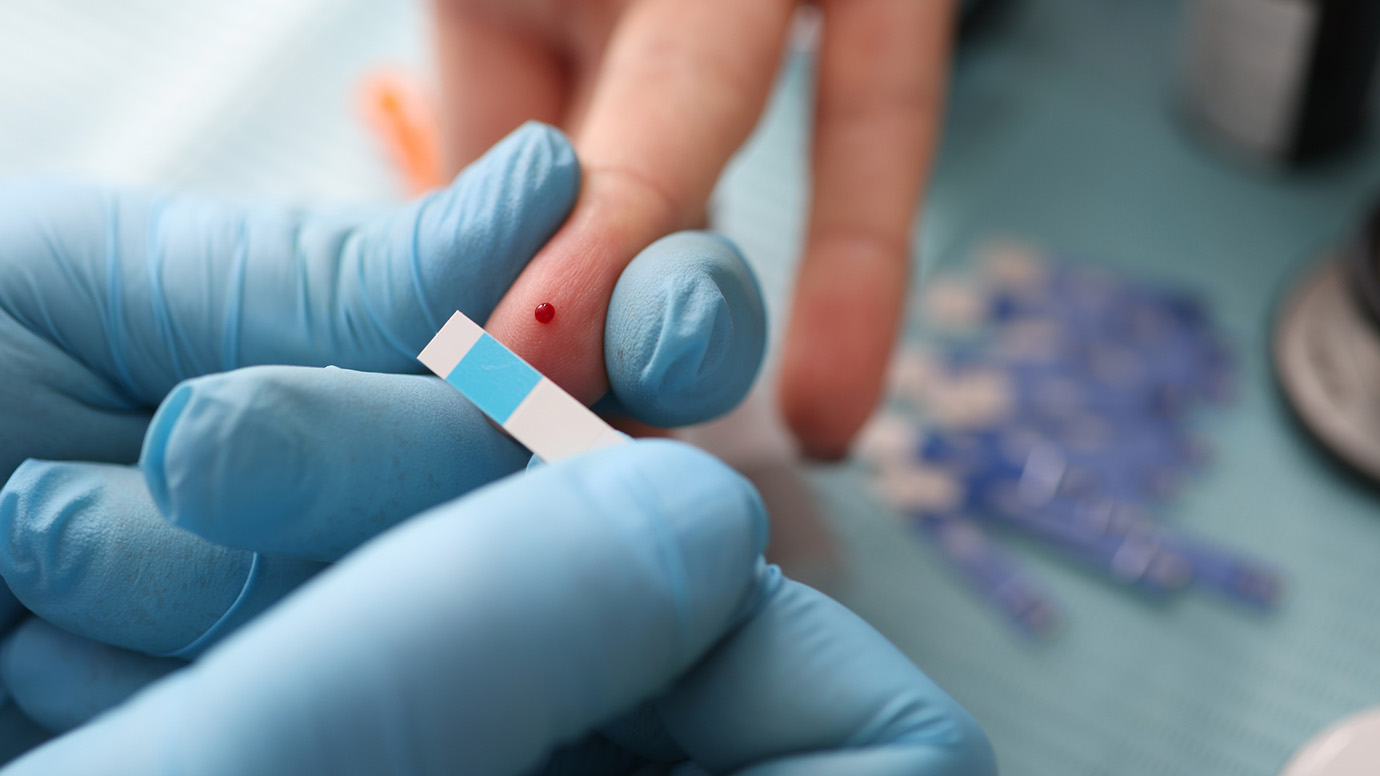“Diabetes a bordo, mi montaña rusa: Superación y resiliencia”
Escrito por: Lucía Feito Allonca de Amato
6 minutos de lectura
noviembre 24, 2021
Hoy vamos a conocer la historia de Cath Mansen, Comunicadora Social peruana y bloguera en “Diabetes a bordo”, que lleva 39 años viviendo con diabetes tipo 1.
Hoy vamos a conocer la historia de Cath Mansen, Comunicadora Social peruana y bloguera en “Diabetes a bordo”, que lleva 39 años viviendo con diabetes tipo 1. Pese a las complicaciones de la diabetes, salió adelante, se colocó una bomba de insulina en los Estados Unidos, y llegó con la tecnología a Lima.
Desde entonces está empoderada y quiere ayudar a otros a sentirse bien con quienes son pese a lo que les haya tocado, en un camino que no siempre es fácil.
Nos cuenta su historia, con la que seguramente muchos se sentirán de un modo u otro identificados.
 El diagnóstico de Cath en Lima, Perú.
El diagnóstico de Cath en Lima, Perú.
Fue diagnosticada a los 5 años 11 meses, ella es de Lima (Perú), pero en ese momento vivía en un departamento al Norte del Perú llamado Piura. Empezó con los síntomas clásicos de la diabetes: bajar de peso, comer tres veces más de lo habitual, tomar mucho líquido, orinar muy seguido… Y de ser una niña muy activa, empezó a quedarse dormida en clase. Su madre le dijo que tenía el aliento con olor a manzana.
Sus padres consultaron muchos médicos en Piura, que le dijeron que tenía de todo: tuberculosis, neumonía…hasta que un día después deun mes , su papá decidió que iban a consultar un especialista en Lima. Al día siguiente Cath y su mamá viajaron de Piura a Lima y sus abuelos maternos ya las esperaban con las citas con los especialistas. Sólo con lo que describíó su mamá, el especialista respondió “Señora, parece que es diabetes tipo 1”.
 Al día siguiente, en la clínica, los análisis confirmaron este diagnóstico y Cath se quedó internada. Su mamá no se pudo quedar a dormir, y le tuvo que dar el diagnóstico a su papá por teléfono. Para ella fue muy duro, porque si bien era muy chiquita, recuerda toda su vida en Piura: sus amigos, e ir a Lima para ella fue un “castigo”, no conocía a nadie y extrañaba lo que conocía. Su padre se trasladó a Lima pidiendo permiso en el trabajo y ella sintió que ya no tenía la vida bonita de “antes de…”, Cath sí vivió un marcado “antes” y “después” de su diabetes.
Al día siguiente, en la clínica, los análisis confirmaron este diagnóstico y Cath se quedó internada. Su mamá no se pudo quedar a dormir, y le tuvo que dar el diagnóstico a su papá por teléfono. Para ella fue muy duro, porque si bien era muy chiquita, recuerda toda su vida en Piura: sus amigos, e ir a Lima para ella fue un “castigo”, no conocía a nadie y extrañaba lo que conocía. Su padre se trasladó a Lima pidiendo permiso en el trabajo y ella sintió que ya no tenía la vida bonita de “antes de…”, Cath sí vivió un marcado “antes” y “después” de su diabetes.
Cree que eso fue lo que tanto impactó en su capacidad de aceptación del diagnóstico, ella sintió que cambió todo a partir de ese momento: su mamá hervía su jeringa de vidrio, su papá le inyectaba insulina bovina o porcina, medía su glucosa en orina y cada mes se revisaba en la clínica.
Lo que había en Perú y sus sueños
Otra cosa también que marcó mucho su vida con la diabetes fue que ella hacía gimnasia acrobática, y el médico le recomendó a sus papás “quitarse” del deporte. (Al contrario de lo que sucede hoy). También Cath relata que ella “adoraba” los dulces, por ello lo sentía todo como un “castigo de Dios”:inyectarse toda su vida, y nunca más comer dulces. “Eso es lo que había acá en Perú”, relata.
No niega que al día de hoy existan aún médicos así, ella nos dice que recién aprendió a contar carbohidratos en 2008 cuando ya su condición de salud estaba muy deteriorada: retinopatía diabética, nefropatía diabética, neuropatía autonómica y periférica… Le salieron tumores en los senos y pensó “mi diabetes me está tocando la puerta para que le haga caso”. Porque hasta ese entonces, Cath dice que su diabetes no era la prioridad, sino su familia, y generar dinero para su familia. Ella tiene un hermano menor que necesitaba seguir estudiando, además, le costó mucho en la pubertad y en la adolescencia cuidarse, comió y bebió… pensó que si se tenía que morir, iba a hacerlo habiendo “disfrutado de la vida”, lo que le llevó a un coma clínico por tres días.
Se cuidaba, pero luego en algún momento siempre volvía a caer en “tentaciones” por lo que esa línea de cuidado no podía extenderse en el tiempo.
A raíz de los tumores, reunió a su familia y les expuso que necesitaba dejar de trabajar para buscar información acerca de su diabetes. Empezó a ver que estaban de moda los “blogs” en inglés, empezó a seguir a una chica y le encantó, porque se sintió que no era “tan rara”, se sintió identificada con muchas cosas que le pasaban a esta chica del blog y evaluó el tema de evaluación de la aceptación o rechazo de la enfermedad. Según ella siempre había aceptado su diabetes, pero se dio cuenta internamente de que no era así.
Allí empezó ella misma a pagarse una psicóloga, porque consideraba que tenía muchas “cosas inconclusas” con muchos traumas de pequeña que no le permitían avanzar en su vida ni romántica ni mucho menos profesional. No tuvo “tan buena suerte” según ella en el amor, ya que le tocó salir con chicos que desaparecían del mapa al saber que ella tenía diabetes.
En el 2008 decide abocarse a saber qué nuevas tecnologías estaban en el mercado, fuera en EEUU o donde fuera, ya que ella se pegó –en sus palabras- “el susto de su vida” con esos tumores.
La salud emocional y nuestros pares con diabetes
Hablamos sobre Psicología y me comenta que admira que Mariana y yo hayamos decidido estudiarla. Ella pudo haberla estudiado, y no lo hizo por estar en negación, llegando a terminar sus estudios de Comunicadora Social. Estima que la ayuda psicológica en la persona recién diagnosticada es muy valiosa. En su propia terapia psicológica, su psicóloga le dijo que ella podía ayudar a los demás contando su historia.
Así nace “Diabetes a bordo: mi montaña rusa”, en un principio como un blog. Ella no era muy “tecnológica”, ella quería el diseño que quería, y hasta estudió lenguaje HTML para hacer su blog tal cual lo quería en cuestión de diseño. Luego escribía en él….y borraba…escribía…y borraba de nuevo…
Mensaje para una persona que tiene complicaciones
El mensaje que doy para una persona que tiene una complicación o para alguien que nos está cuidando sería algo que mi abuelito siempre sabiamente me decía, “hija, sin salud, no tienes nada”. No tienes trabajo, economía…sin salud, no puedes hacer las cosas.
Mi mensaje sería de aceptación. Yo me he demorado muchos años en aceptar mi enfermedad creyendo que la había aceptado, hoy día es más fácil con tecnologías en salud es más fácil, y una asesoría psicológica porque tu vida cambia radicalmente (al menos así fue con la mía).
Otro mensaje: que busquen a sus pares, hoy en día es más fácil con el Internet, los grupos de WhatsApp, y las comunidades de Internet, instagram, facebook… para que no te sientas raro, que eres el único en el mundo que un día, se comió un chocolate y ¡Oh, pecado! Entonces…yo diría eso, básicamente, educación en diabetes. Mis padres me dijeron “nosotros cometimos tantos errores…” y yo les dije, “Yo no tengo nada que reprocharles a ustedes, yo tengo 45 años, 39 años con diabetes tipo 1 y sigo viva”. Con complicaciones. Pero sigo viva “gracias a ustedes”.
Porque en aquél entonces, el médico decía lo que decía y eso era ley.
 Crear comunidad y el trabajo en redes sociales
Crear comunidad y el trabajo en redes sociales
En redes me pueden encontrar como “Diabetes a Bordo” en Facebook, en Instagram también, el blog ya está actualizado. (www.diabetesabordo.blogspot.com) Pasé unos momentos difíciles antes en aquel 2008 me habían dicho que no podía tener hijos… Sufro de depresión y estados de ansiedad. Y es muy importante con la diabetes estar bien, y querer hablar de ella.
Tengo un canal de youtube recién comenzado, me estoy moviendo más en Instagram. Me muevo mucho en una asociación de diabetes tipo 1, llamada DM1 Perú, en la que las mamás son de mi edad y tienen hijos con diabetes tipo 1, pero sólo me siento comprendida en estos grupos donde todos tenemos más de 20 años con diabetes y saben de esas cosas raras, como hervir la jeringa y no usar monitoreo continuo de glucosa.
Para finalizar me gustaría señalar un extracto de mi charla con Cath. Hablábamos de diabulimia. Es un trastorno de la alimentación y la salud mental con mayor prevalencia en personas jóvenes con diabetes. Es de gran importancia, y si bien nos gusta siempre dar mensajes positivos, ella me comentaba cómo al publicar sobre ello, nadie daba me gusta ni lo miraba. Pasaban de largo.
Sólo pedir un minuto de reflexión para recordar que las complicaciones existen. Cerrar los ojos no va a hacer que desaparezcan. Lo mismo para los malos momentos, y ni nos definen, ni determinan quiénes somos. Seremos quién queramos y decidamos ser.
Decidamos por ende ser empáticos y nunca cometer el error de creernos invulnerables o mejores que los demás, porque le han tocado peores cartas para jugar en este juego de la vida.
Construyamos un espacio de la diabetes rebosante de apoyo y amor. Sin lugar para juzgar lo que no nos ha tocado vivir. Sin cerrar los ojos a lo feo… pero sin permitir que nos venza. Jamás.

Autor
Lucía Feito Allonca de Amato
Lucy lleva 30 años viviendo con diabetes tipo 1, tiene doble nacionalidad Española y Argentina y es Licenciada en Derecho por la Universidad de Oviedo. Forma parte activa de la comunidad en línea de diabetes, temática en la cual se mantiene permanentemente actualizada. También es paciente experto en enfermedades crónicas cardio-metabólicas por la Universidad Rey Juan Carlos y activista por los derechos de las personas del colectivo LGBTQ+.
Recursos relacionados

Es fácil, cuando escuchas las palabras diabetes tipo 2 (DM2). Sentir culpa, como si de...
Leer más’

Olvida todo lo que piensas o sabes sobre la diabetes. Dependiendo de dónde lo hayas...
Leer más’

Durante la semana del 14 de octubre de 2025, California se convirtió en el estado...
Leer más’

